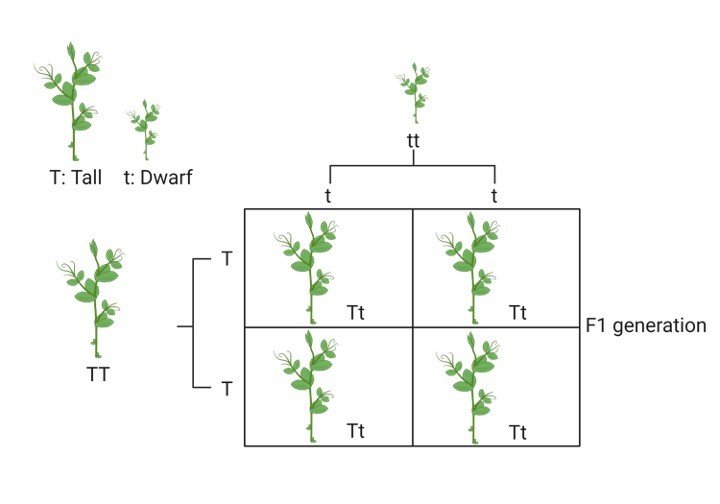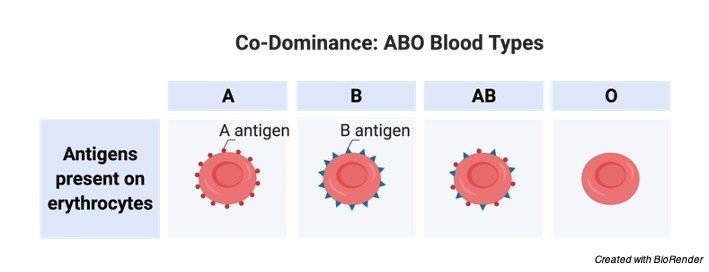-

Vacuole: Definition, Meaning, and Examples
Continue ReadingVacuole Definition
Vacuolum is a shortened version of the word vacuum in Latin.
An intracellular secretion, excretion, storage, and digestion membrane-bound vesicle located in the cytoplasm of a cell. A vacuole is a membrane-bound cytoplasmic vesicle.
A vacuole contains a mixture of inorganic and organic substances. In some cases, ingested solid particles can be found in the vacuole.
Plants and fungi have it in their cells. It’s also been discovered in protists, mammals, and bacteria cells. Vacuoles come in a variety of sizes and shapes.
Vacuoles serve a variety of purposes as well. One of them is intended to function as a cubicle. Water (particularly in plant cells), waste materials, and tiny molecules can all be found in a vacuole.
It’s a necessary step in isolating elements that could harm the cell. In plant cells with big vacuoles, the vacuole maintains an internal hydrostatic pressure inside the cell, assisting plants by providing support for plant structures like leaves and flowers.
In seeds, the vacuole also serves as a storage vesicle. Proteins required for seed germination are stored in this organ.
Vacuole Citations
Share
Similar Post:
-

Voluntary Muscles: Definition, Meaning, and Examples
Continue ReadingVoluntary Muscles Definition
A muscle that can be voluntarily controlled.
Some of the body’s muscles can be intentionally controlled. Other muscles function at a subconscious level. Voluntary muscles are those that can be regulated at the user’s will (volition).
Involuntary muscles are those that are not controlled by the brain. Smooth and cardiac muscles are involuntary muscles, whereas skeletal muscles are voluntary.
Skeletal muscles are linked to the bones and are striated muscles (thus the name). When examined under a microscope, the striations are generated by the presence of transverse patterns in the muscle fibre.
Striations aren’t just seen in skeletal muscle fibres; they’re also found in cardiac muscle fibres.
The heart muscle, on the other hand, contracts in a rhythmic and autonomic manner. As a result, the heart muscle is classified as an involuntary muscle.
Skeletal muscles, in general, function at the will of an individual and are thus voluntary. The somatic nervous system is a component of the peripheral nervous system that is involved in skeletal muscle voluntary control of bodily motions.
Afferent and efferent nerves make up the somatic nervous system. The afferent nerves transmit information to the central nervous system, whereas the efferent nerves stimulate skeletal muscle contraction.
Voluntary Muscles Citations
Share
Similar Post:
-

Zoology: Definition, Meaning, and Examples
Continue ReadingZoology Definition
The word comes from the Greek words zôion (“animal”) and lógos (“knowledge”).
The study of the anatomy, physiology, development, and categorization of animals is a field of biology that deals with animals and animal life.
The study of animal anatomy, physiology, development, and categorization is included in zoology, a field of biology that deals with animals and animal life.
A zoologist is a professional who specialises in the discipline of zoology. The father of zoology, Aristotle, is revered.
It is divided into several sub-disciplines:
• Anatomy of animals (concerned with the anatomical features of animals)
• Physiology of animals (deals with the physiological processes in animals)
• Histology of animals (concerning the study of animal tissues)
• Embryology of animals (focused mainly on studying animal embryos)
• Taxonomic classification (including identification and classification of animals, and therefore encompasses fields such as mammalogy, herpetology, ornithology, entomology, ichthyology, invertebrate zoology, etc.)
• Zoogeography is a term that refers to the study of animals (concerned mainly with the study of animals and their habitats).
• Anatomical comparison (deals with the similarities and differences in the anatomy of different species)
• Ethology (the study of animal behaviour) is a branch of ethology.
Veterinary medicine is a closely connected subject. It is a field of medicine that deals with the illnesses and treatment of non-human animals in particular.
Zoology Citations
Share
Similar Post:
-

Absorption: Definition, Meaning, and Examples
Continue ReadingAbsorption Definition
The word absorption comes from the Latin word absorptio, which means “to absorb.”
In a broad sense, absorption refers to the act or process of absorbing or assimilating something. Absorption refers to the process of absorbing or assimilating substances into the cell or across tissues and organs in biology. Diffusion or osmosis are used to accomplish this.
Absorption via the skin, for example, is one method for chemicals to enter the body. The act of absorbing some hazardous chemicals via the skin (also known as dermal absorption) is one of the ways they might enter the body (others include inhalation and ingestion).
For some medicines, dermal absorption can be utilised as a route of delivery. The absorption of digested food, particularly via the intestinal wall, is another type of biological absorption (especially in the small intestine).
By diffusion or active transport, the digested food in the small intestine travels past the walls of the small intestine and into the blood vessels.
Absorption refers to the act or process of keeping light energy without reflection or transmission after passing through a material, as in the absorption of light by atoms, in other related fields such as physics.
Absorption in chemistry refers to the process by which one material permeates another, such as a liquid penetrating or being absorbed by a solid.
Absorption Citations
Share
Similar Post:
-

Transport of Gases during Respiration: Definition, and...
Continue ReadingTransport of Gases during Respiration: Definition, and Examples
Share
Similar Post:
-

Respiratory Organs: Definition, Structures, and Examples
Continue ReadingRespiratory Organs: Definition, Structures, and Examples
Share
Similar Post:
-

Respiratory Volumes and Capacities: Definition, and Examples
Continue ReadingRespiratory Volumes and Capacities: Definition, and Examples
Share
Similar Post:
-

Allele: Definition, Characteristic, and Examples
Continue ReadingAllele Definition
Allele is a variation of a gene that controls the same characteristic and is located in a certain chromosomal region (called the locus). Allele is derived from the Greek ἄλλoς (állos), which means “other.” Allelomorph is a synonym for allele.
What is Allele?
An allele is a word used to define a gene’s unique copy. In eukaryotic genomes, genes, or DNA sequences that govern human characteristics, are generally present in two copies; each copy (allele) is inherited from one parent. Each allele is assigned to a unique gene locus on the chromosome. The two alleles of the gene are found in the same area of two homologous chromosomes, one from each parent. It’s possible that the alleles are dominant or recessive. The influence of the recessive allele is masked by the dominant allele (definition: the allele that is expressed) (definition: the allele that is not expressed).
An observable trait or attribute is referred to as a “phenotype.” If the trait is regulated by only one gene, the genotype is made up of both alleles. As a result, the term genotype refers to an organism’s set of alleles that code for each characteristic. The genotype of a gene can be characterised as homozygous or heterozygous depending on the DNA sequence of each allele.
The term homozygous genotype refers to an organism’s genome having two identical alleles for the same gene. Both alleles contribute equally to the trait’s manifestation. In contrast, a heterozygous genotype has two distinct versions of the same gene. However, some genes contain more than two different allelic forms, which are referred to as many alleles.
Allele Examples
Alleles and how they are expressed are shown in the examples below. As in the case of full dominance, allelic expression may follow a Mendelian pattern of inheritance. The alleles may be manifested by codominance, partial dominance, or polygenic inheritance in nonMendelian inheritance.
i. Complete Dominance
The alleles responsible for blossom colour in garden peas, one of the seven characteristics examined by Gregor Mendel in his studies that subsequently established the laws of genetics, are a classic example of how alleles function.

The blooms of garden peas can be purple or white in hue. The allele for purple colour and the allele for white colour are present in the gene coding for this characteristic, which is responsible for generating a purple pigment.
To characterise genotypes, alleles are assigned letters. The allele for tall (referred to as T) can naturally express tall phenotype, but the allele for dwarf phenotype (referred to as t) can’t. As a result, the tall genotype is abbreviated as TT, Tt (Tall phenotype) whereas tt for dwarf phenotype. In this case, however, one T allele is capable of producing enough genes to turn the height tall. Plants with either the TT or Tt genotypes will produce tall phenotype, whereas only the tt genotype will have dwarf phenotype.
The dominant allele is the one that exhibits the characteristics above the other one in this scenario (the T allele in this case). The other allele (t) is recessive, meaning it is only expressed when two copies are present.
This isn’t always the case, though. Codominance is a situation in which two distinct alleles (heterozygous genotype) are equally expressed in some genes. ABO blood grouping alleles are one of the most common instances of this sort of inheritance.
Many ABO blood types are found in humans. Antigens unique to blood types A, B, AB, and O can be seen in the red blood cells. The A antigen is found in blood type A. The B antigen is found in blood type B. A and B antigens are found in blood type AB. On the cell surface of red blood cells, blood type O lacks antigens A and B.
ii. ABO Codominance
There are three allelic forms of the ABO locus: A, B, and O. The blood group phenotypic is determined by the genotype of this gene, which determines the antigens on red blood cells. The A and B alleles both code for glycosyltransferase, which catalyses the last step in the production of A and B antigens, but the O allele codes for an inactive form of the enzyme. Due to numerous single nucleotide polymorphisms (SNPs) in the ABO gene, the enzymes transcribed by the A and B alleles differ in only four amino acids.

The ABO gene’s inheritance pattern is shown in the table below. Because the locus has three different alleles, mating can result in six genotypes. A, B, AB, and O are the only four phenotypes (blood groupings) that exist. In blood groups, there are two inheritance patterns. When the O allele is present, both the A and B alleles become dominant. If a person has the AB genotype, however, both alleles are expressed equally (codominance), resulting in a phenotype in which both A and B antigens are present on the surface of red blood cells.
iii. Multiple Alleles
It’s possible that certain genes have more than two allelic variants. Many people are aware that human genes have many alleles. Each gene may only have two alleles per person. Within a population, however, certain genes may contain hundreds of alleles. Any allele is the consequence of a change in the DNA sequence of a gene, even if the change is only one nucleotide long.
As a result, having many alleles of a gene does not always imply phenotypic diversity. Many allelic variants are caused by variations in the gene’s sequence that have no effect on the protein’s sequence or function. In comparison to mutant alleles that alter protein structure or function, all of these “normal” alleles are referred to as “wild-type” alleles.
All mutations discovered in a gene in a population are sometimes referred to as multiple alleles. Multiple loss-of-function mutations, for example, can be found in a group of individuals with a genetic illness. Although various mutations result in the same consequence, loss of protein function, each mutation is treated as a separate mutant allele if it occurs in a distinct gene location.
iv. Beta-Thalassemia
The decrease or lack of beta-globin chains in haemoglobin is known as beta-thalassemia. So far, more than 300-thalassemia alleles have been identified, with the majority inheriting in a Mendelian recessive manner. The majority of reported mutations in the-globin gene or its surrounding areas included a single or a few nucleotides.
There have also been reports of deletion mutations that result in the entire lack of chain manufacturing. The severity of the illness is mostly determined by the chain’s quantitative decline level. Beta-thalassemias are a category of hereditary blood diseases characterised by a wide range of mutations in the globin gene and a wide range of symptoms.
v. Short Tandem Repeats (STR)
Short tandem repeats (STRs) are short DNA sequences (2-6 nucleotides) found throughout the genome. Although they are non-coding DNA sequences, they have been related to particular genetic disorders. However, forensic investigation is the most common and effective application of STR markers. The amount of repetitions in each STR locus varies a lot from person to person.
Using these differences within a population, scientists devised a forensic identification technique based on several STR markers. The combination of several markers in the same test results in a high level of discrimination in the form of a unique “DNA fingerprint” that may be used to identify people in instances like unidentified bodies or criminal suspects.
Allele Variation
Returning to the ABO blood groups, genetic differences between alleles might result in protein differences. Even a modest change in protein levels, in this example, four amino acids, can have a significant impact on phenotypes. Because the recipient’s immune system reacts to the ABO antigens present in the donor’s RBCs, a blood transfusion to an incompatible patient might result in death. As a result, allelic variation between genes can be considered one of the main mechanisms contributing to the genetic diversity observed between people.
i. Discontinuous Variation
Discontinuous variation, which occurs when a characteristic exists in two or more distinct alternative forms, is shown in blood groups and flower colour phenotypes. Different phenotypes can be clearly identified in this sort of variation. Polymorphism is a word used by geneticists to describe characteristics that have two or more common phenotypes in a population, while morphs is a term used by geneticists to describe individual phenotypes.
Rare, extraordinary phenotypes exist in some situations; they are referred to as mutants, whereas the more frequent normal phenotype is referred to as wild-type. Although both polymorphisms and mutations are caused by changes in DNA sequence, polymorphism alterations have become increasingly prevalent.
ii. Continuous Variation
Continuous variation is the second form of genetic variation. As opposed to discontinuous variation, this form of variation exhibits a continuous range of phenotypes that can not be identified as discrete phenotypes. Weight, height, eye colour, and other quantifiable traits are examples of characters that demonstrate continual fluctuation. These phenotypes are more difficult to analyse than those with discontinuous variation since they are generally encoded by several genes.
Molecular Basis of Allelic Variation
Phenotypes can be caused by the activity of a single gene, as in most discontinuous phenotypes, or by the action of multiple genes, as in continuous phenotypes. The majority of genes code for proteins that express the characteristics directly. Proteins are the key factors presenting the phenotype through executing their biological activities, as they are the direct product of gene expression. Proteins might be antigen receptors, pigments, hormones, antibodies, or enzymes that deliver antigens to immune cells.
Variation in the genes that code for these proteins can have a variety of effects, ranging from no impact to altering the function of these genes. A single nucleotide, the building block of DNA, can alter some genetic variants. The most prevalent and simplest kind of genetic variation is nucleotide substitution. Amino acid substitution will occur if a substitution occurs in the coding region of the gene.
The impact of amino acid substitution on protein function and phenotype is largely determined by the altered amino acid location within the three-dimensional structure of the protein. An enzyme’s job, for example, is to catalyse chemical reactions by attaching to its substrates via an active site, which is an area inside the enzyme’s 3D structure that is lock-and-key bonded to a substrate. Because biological activity is based on structure, any minor alteration in the 3D structure of the active site will have a direct impact on enzyme function.
As a result, a base-pair substitution that changes an amino acid in the active site or in a different area of the active site, causing the active site’s 3D structure to alter, will stop the enzyme from working. Other nucleotide changes can result in a stop codon, causing translation to end prematurely and the production of truncated protein products.
Mutations can also take the form of one or more nucleotide additions or deletions. Because the mRNA molecule is read in three “codons,” the effect of these mutations is typically more harmful to the protein; thus, unless the deletion or insertion contains a multiple of three nucleotides, a shift in the reading frame will occur, altering all the subsequence codons. “Frameshift mutations” is the name given to such mutations.
Allele Citations
Share
Similar Post:
-

Arthropods: Definition, Characteristic, and Examples
Continue ReadingArthropods Definition
An invertebrate animal with a chitinous exoskeleton and numerous jointed limbs that belong to the Arthropoda phylum. The Greek word árthron, which means “joint,” is the source of the word arthropod.
What is Arthropod?
The presence of numerous joints, a chitinous exoskeleton, segmentation, and an open circulatory system distinguishes an arthropod from other invertebrates.
The interior organs of the creatures are protected by the chitinous exoskeleton. It also serves as an attachment point for creatures’ muscles, particularly for arthropods with moving appendages.
The exoskeleton of an arthropod is made up of layers of chitin and proteins. Arthropods use segmentation to account for the specialisation of their structures and organs. Segments also serve as a location for arthropods’ numerous limbs or appendages to emerge. These appendages provide a variety of tasks, including feeling, movement, copulation, and eating, among others.
The heart and short arteries make up the open circulatory system of arthropods, with the heart delivering hemolymph to sinuses around the internal organs through the shirt arteries.
The phylum Arthropoda is further split into sub-phylum groupings, each of which is defined by the characteristics of the creatures inside it, such as the subphylum Trilobitomorpha. Crustacea comprises lobsters, shrimp, and crabs, all of which are distinguished by their extinct trilobites. Members of the Chelicerata family have numerous limbs. Scorpions and spiders are among them. The Tracheata subphylum includes myriapods and insects.
Arthropods Characteristics
Insects, shrimp, millipedes, spiders, and crabs are all members of the Arthropoda phylum, which contains roughly 85 percent of all creatures. There are over 30 million species of arthropods recognised and described. Insects make up about a million of these species.
Arthropod species may be found in a variety of environments, including deep oceans and high heights. As a result, members of the phylum Arthropoda have a wide range of forms and history.
The biomass of arthropods is thought to be higher than that of all other creatures. They have characteristics that separate them from other invertebrates. Exoskeletons and jointed limbs are examples of these features.

Arthropod exoskeletons are formed from a hard cuticle covering. Arthropods’ muscles are linked to the cuticle that runs between their body segments and limbs, allowing them to move freely. The cuticle is mostly made up of chitin, which is plentiful on the planet.
Arthropods have segmented bodies that seem bilaterally symmetric, and the number of segments in their bodies varies, as do their appendages, which serve a variety of purposes depending on the area from which they arise.
Arthropods have a dorsal heart and a vascular space that makes up a hemocoel in their circulatory system. A brain or an oesophageal centre is located anteriorly, while a nerve cord with ganglions is located ventrally. The muscles of arthropods are mostly striated fibres lacking epithelial cells or cilia.
Arthropods have been around for millions of years. The dominating arthropods, trilobites, for example, radiated approximately 550 million years ago in the early Palaeozoic oceans. Furthermore, it is thought that arthropods evolved from their early annelid predecessors throughout the times of development. In the Devonian period, approximately 350 million years ago, the first arachnids, as well as insects, marine spiders, and millipedes, arrived around 400 million years ago.
The biggest phylum in the Kingdom of Animalia is Arthropoda. Insects, arachnids, myriapods, and crustaceans are among them. They are distinguished by the following characteristics: A strong chitinous exoskeleton, segmentation, multiple jointed (paired) limbs, and an open circulatory system are all present.
Structure of Arthropods
Arthropod exoskeletons are critical to both success and limits. Exoskeletons serve a variety of purposes, including providing protection from the outside world, assisting in movement, supporting the body, reducing water loss, and storing energy. The exoskeleton is made up of two layers: the epicuticle, which is non-chitinous and impermeable, and the endocuticle, which is elastic and porous.
Chitin and protein make up the majority of the endocuticle. Calcium carbonate has the ability to harden the outer layer of the endocuticle. A variety of marine crustaceans, as well as arachnids and insects that sclerotize cuticle proteins, have this feature. Because arthropods have such a diverse range of morphologies, their mouthparts are toughened, allowing them to consume a wide range of food sources. In addition, the exoskeleton of insects and myriapods lines the trachea, or breathing passages, and reaches to the stomach. In addition to its flexibility, this remarkable mix of soft membranes and hard materials gives rigidity and strength.
Because the solid endoskeletons of vertebrates are approximately three times weaker than the same area of an exoskeleton, the natural composition of the arthropod provides particular benefits over the endoskeletons of vertebrates, such as higher bending resistance. As a result, in order for the endoskeleton to be as strong as the exoskeleton, it must be thicker, leaving less room for muscles.
Arthropods’ endoskeletons are mechanically efficient due to their flexibility, and, as a result, they create a broad range of body shapes and morphologies, resulting in a huge diversity in the composition of various arthropods. This variant isn’t seen anywhere else in the Animalia kingdom. However, exoskeletons may result in some restrictions, such as the organism’s physical size being limited as it grows. As a result, as the organism becomes larger, the outer exoskeleton covering will be shed. The exoskeleton must be pierced with sensilla in order to observe the outside environment.
Despite their size limits, some ancient aquatic arthropods grew to be 1.8 metres long, and a few crustaceans, such as gigantic spider-crabs, may weigh up to 6.4 kilogrammes, but most arthropods are currently very tiny.
Arthropods in the sea can grow to be much larger than those on land. The biggest land spiders and insects weigh less than 100 grams. The Goliath beetles, the world’s biggest bugs, are 10 cm wide and 15 cm long. The tiniest arthropods are mites and parasitic wasps, measuring less than 0.23 mm in length. Even though they are tiny (less than the weight of a cell’s nucleus), they have complex activities and structures.
The image above depicts the variety among different species of the phylum Arthropoda; arthropods’ length and size range from 1 millimetre to 4 metres. They do, however, share several distinguishing characteristics, such as the existence of an outer exoskeleton in all Arthropoda. They also have a segmented body and appendages that are jointed.
Respiration in Arthropods
Arthropod respiration changes depending on the species. Trachea are tiny tubes that allow oxygen to diffuse into all regions of the body in myriapods and insects. Physical limitations regulate the diffusion process in arthropods, so that an organism’s growth has no effect on the amount of oxygen supplied to its tissues. Tracheal respiration, on the other hand, is extremely efficient, allowing for breathing with only a tiny partial pressure difference between the outside environment and the pressure in the trachea.
The trachea may provide oxygen to the insect’s muscles through respiration. Diffusion through the cuticle or gills is used by marine arthropods (such as in the Crustacea). Arachnids have gills that are enclosed (book lung).
Even while exoskeletons constrain arthropods, they have numerous additional adaptations that have allowed them to live and prosper for millions of years.
Life Cycle of Arthropods
Sexual reproduction is the primary mode of reproduction for arthropods. Some arthropods, such as barnacles, are hermaphroditic, meaning they have organs from both sexes. Parthenogenesis is only used by a few crustaceans and insects to reproduce. When the conditions become more suitable, they resume sexual reproduction.
Arthropods that dwell in watery environments frequently reproduce sexually, usually by external fertilisation. Crustaceans and Opiliones use specialised appendages known as penises or gonopods to procreate sexually.
Internal fertilisation is used by all terrestrial arthropods to reproduce. Males achieve this by generating packets of sperm called spermatophores, which females then accept into their bodies.
Arthropods are known for laying eggs. Gravid scorpions, on the other hand, lay eggs that hatch inside their bodies.
Arthropods can be fully formed adults when they are born. Others, on the other hand, are powerless until they moult for the first time.
Insects without cuticles hatch as caterpillars or grubs in order to develop their adult tissues.
Molting is a process that controls the growth of arthropods with an outer shell. Molting is controlled by numerous hormones that work together to promote the growth of the arthropod.
The enzymes breakdown and tear down the old cuticle’s inner layers, allowing the new cuticle to be detached. The arthropod consumes air or water to solidify the new flexible cuticle.
Without hatching, marine crustaceans develop immediately. After being given water, large eggs hatch. During its life cycle, the Chinese mitten crab migrates to the surface and to the bottom to reproduce. As a result, it has an impermeable cuticle that can survive large variations in osmotic pressure.
Types of Arthropods
Arthropods may survive in both freshwater and on land. Freshwater is home to the majority of crayfish and brachiopods. Amphipods, copepods, crabs, shrimp, isopods, and ostracods are examples of additional taxa that live in freshwater.
Freshwater creatures adapt to their environment by incorporating systems that prevent water from entering their bodies. They resist the clearance of ions from their bodies into the surrounding environment, despite the fact that the fluids inside their bodies are more diluted than the fluids in their surroundings.
The cuticle of crustaceans is virtually impermeable, preventing water from accessing their bodies. The only permeable component that allows gas exchange is the gills. As a result, in crustaceans, gills are in charge of osmoregulation.
To fight the dilution of water inside their bodies, crustaceans release amino acids from their muscles into their blood. The excretory organs help them get rid of surplus water in their bodies.
Semi-terrestrial animals, like the fiddler crab, live in the transition zone between air and water. They have fluids in their bodies that cause their osmotic pressure to be relatively high. This discovery implies that semi-terrestrial life may have originated from saltwater. Land crabs (a whole family of amphipods) have stiffened gills that function as lungs and allow some gaseous exchange, allowing them to survive in both water and on land. Despite the fact that they spend most of their time on land, they reproduce in the water and leave their eggs to grow directly.
Classification of Arthropod
The phylum is divided into many categories. Arthropoda have been postulated since arthropods were first discovered. As a result, there is no standard system for classifying arthropods. The main structural characteristics of arthropods, such as the genital opening location and the mandible’s articulation, distinguish various schemes. These characteristics are also used to categorise arthropods in a hierarchical order.
This categorization is divided into two categories. According to one theory, arthropods are monophyletic because they evolved from common ancestors. This is the most often used arthropod categorization in the literature. The alternative theory proposes that arthropods evolved from separate progenitors and subsequently became architecturally similar to one another via evolution, implying that arthropods are polyphyletic.
For arthropods, each perspective has its own subdivisions. The monophyletic group believes that all arthropods descended from an ancestor with unique body segmentations. Crustaceans, insects, arachnids, pentastomids, trilobites, myriapods, and other monophyletic arthropods are divided into numerous categories.
The Trilobitomorpha, which contains extinct trilobites, the Mandibulata (having articulated mandibles split into seven groups, with antenna), and the Chelicerata are three classification schemes for arthropods (without antenna but with a head and with appendages used for walking). The unclear link between Pentastomida, Tardigrada, and Onychophora, as well as the other arthropods, is one of the scheme’s fundamental flaws.
(1) Chelicerata,
(2) Trilobita,
(3) Myriapoda,
(4) Insecta,
(5) Onychophora, and
(6) Crustacea, according to another classification.
There are three recognised categories of arthropods based on polyphyletic categorization. These are the organisations.
1. Myriapoda, Onychophora, and Hexapods are all members of the Uniramia family.
2. The Crustacea are the second category.
3. The Chelicerata are the third category.
Because each group represents a different phylum, the phylum Arthropoda is not recognised. Some groupings are unclear, such as trilobites, which are thought to constitute a different phylum due to their unique appearance. Uniramia (containing the Tardigrada) and Pentastomida are also difficult to classify.
Arthropods are divided into five subphyla according to the most current arthropod classification:
1. Aquatic Crustacea (e.g. shrimp, crab species, and lobsters)
2. Chelicerata (e.g. marine horseshoe crabs, mites, and scorpions)
3. Myriapods are a kind of myriapod (a subphylum containing centipedes and millipedes).
4. Hexapods or Insecta, which are related to crustaceans and hexapods.
5. Trilobites, a group of aquatic creatures.
There are three subphyla of arthropods: Trilobita, Chelicerata, and Mandibulata.
Chelicerata (spiders, scorpions, etc.), Crustacea (shrimps, lobsters, crabs, etc.), Tracheata (insects and myriapods), and Trilobitomorpha are the primary sub-phylum groupings of Arthropoda (extinct trilobites).
Evolution of Arthropods
The first arthropods were most likely trilobites. About 500 million years ago, their fossils were unearthed. Trilobites are arthropods with several segments and walking legs that live in the sea. More arthropods appeared and developed after trilobites. Fused segments are one of its distinguishing characteristics. They also lost their appendages. Arthropods eventually developed into having a three-segmented body.
Trilobites, the first known arthropod species, were discovered around 500 million years ago and thrived for around 200 million years before becoming extinct, leaving behind a large quantity of remains.
Arthropods were most likely the first creatures to exist on the planet. Millipedes were the first arthropods to move on land. They created a trachea, or lungs, for breathing, as well as an exoskeleton to shield arthropods from drying up and give structural support.
Arthropods have a similar segmented anatomy that gives birth to numerous structurally diverse groups. Despite the fact that all arthropods have exoskeletons, their thorax, head, and abdomen are morphologically distinct. Many of them, for example, lack segmented appendages, which are typical in many other arthropod families. The genetic diversity among these species determines the structural differences between them.
The Onychophora are a group of creatures that are believed to be transitional between arthropods and annelids. Their bodies are segmented, and they share many characteristics with arthropods, such as tracheal breathing, claws at the ends of paired limbs, and the structure of their reproductive system. Their repeating segments of excretory organs, the shape of the head and eyes, and their unstriated muscles, on the other hand, are comparable to annelids. Onychophora and arthropods are thought to have shared ancestors, the aquatic lobopods, according to various data.
Crustaceans and insects are thought to share a common ancestor. The order of the mitochondrial genes, which is the same in both groups, supports this theory. Both classes should be classified together in such findings. Crustacea, on the other hand, has an extra set of antennae on the second segment, which is the primary distinction between the two families.
Chewing mandibles are seen in a variety of crustaceans and insects. These mandibles in the third segment developed via truncation of the whole limb, according to fossils. Insects do not have the same level of diversity as crustaceans. This explains the thorax’s continuous configuration of three pairs of limbs with no limbs in the abdomen. The variety among crustaceans is due to the many genetic ways in which isopods (feeding appendages) are produced in place of walking legs. The head is located in the first section of the thorax.
Ecological Importance of Arthropods
Arthropods are an important part of the environment because they play a role in food chains. Decomposers, pollinators, herbivores, parasites, seed dispersers, and predators are all examples of arthropods. They have many features that enable them to play an important part in the ecological system.
They have a high reproductive capacity, several adaptations for diverse environmental circumstances, a tiny size, and a wide range of biodiversity. Arthropods are employed as biological markers to determine the ecosystem’s health. Biological indicators are primarily used in the study of ecosystem fluctuations and conditions by giving data that aids in the management of ecosystem plans.
Due to their vast geographical spread, large patch size, fast turnover, large population number, and patch dynamics, arthropods have more temporal and explicit scales than birds and vertebrates.
Carnivorous, parasitic, and other consumers rely on arthropods as a source of food. They also function as eliminators, acting as detritivores and decomposers of deceased organisms. They also aid in the dispersal of seeds, pollination, and the creation of microhabitats. As a result, the presence of arthropods in an environment reflects the ecosystem’s health.
Arthropods in the soil breakdown the forest environment, while winged arthropods pollinate it. As a result, the loss of pollinators will eventually lead to a reduction in seed production, while the loss of soil arthropods will likely result in an ecological imbalance.
Medical and Economic Use of Arthropods
Arthropods play a significant role in human life. Humans, for example, utilise a variety of crustacean species as a food source (e.g. lobsters, crabs, etc.), Others, on the other hand, can be hazardous to people if they have recently consumed neurotoxins-producing plants. Furthermore, some of them are capable of transmitting parasites to people. Bees, wax, silk, and dye are all made with the help of insects and other animals. They can also help with flower pollination.
Arthropods Examples
The presence of a pair of mandibles, two pairs of antennae, two pairs of maxillae, and five or more pairs of legs distinguishes crustaceans. The body is split into a segmented abdomen and a cephalothorax in more evolved species like lobsters and decapods. Their appendages have been adapted to fulfil particular tasks. The majority of Crustacea species are found in the sea. Only 3% of species live entirely on land, whereas the remainder dwell in freshwater.
Crustaceans breathe through their cuticles, which perform gas exchange all over their bodies, or through their gills. The length, evolution, and habitat of Crustacea species differ. Without an antenna, the chelicerate body is generally split into an opisthosoma and a prosoma. Unlike insects and crustaceans, chelicerates use their appendages as legs rather than mouths.
Crabs are one of the most common crustaceans on the planet. They are members of the Decapoda order. Crabs may colonise nearly any habitat, including both terrestrial and marine environments. They may dwell in deep waters with depths of up to 6,000 metres or on mountains with a height of up to 2,000 metres above sea level. Crabs may also live in estuarine environments with daily temperature and salinity fluctuations. Crabs have adapted to survive in a land environment. They return to the water on occasion. Other spices require no water at all, while others simply require a temporary source of water, such as tiny water bodies in tree holes.
In the world, there are around 6,793 crab species. Crabs of the genus Brachyura communicate by waving or drumming, and they are generally aggressive, fighting over a house or a female crab. They work together to defend and feed their families. To conceal, mate, or relax, some crabs burrow in mud or sand. Crabs often eat algae, but depending on their species, they may also ingest worms, debris, worms, bacteria, or mollusks. Some crab species change their appearance over time. Their development is marked by a decrease in the size of the abdomen or an increase in the robustness of the body.
Crabs mate for life. They are attracted to one another for auditory, chemical, vibratory, or optical reasons. Chemical attractants are used by most aquatic crabs, while visual attractants are used by terrestrial crabs. Internal fertilisation is seen in the majority of crabs. Eggs are elaborated into the female’s abdomen below the tail for protection after fertilisation.
In contrast to crustaceans and insects, myriapods have antennae in their anterior segment and large mandibles in their second segment. Because the cuticle of myriapods includes a small amount of wax, it is not as impenetrable as that of arachnids. In myriapods, such as insects, excretion is not developed. In myriapods, malpighian tubules are responsible for excretion. The tracheal respiratory system, which myriapods use to breathe, distributes oxygen to the blood rather than the cells. The spiracles in their trunks can not be closed to reduce water conservation. To summarise, myriapods have adapted to the terrestrial environment even better than spiders.
Insects are found in over a million different species. They are, in fact, the most well-known animal order. Insects have developed an adaptive connection with blooming plants on land. Nevertheless, unlike crustaceans, many young insects exist in freshwater, whereas just a few species of insects dwell in the sea. As a result of their adaptation to specific features such as their capacity to fly, flexibility in their life cycle, and water conservation, insects are classified as terrestrial creatures.
Insects can escape competing with big animals due to their tiny size. Insects’ reproductive capacity also boosts the size of their colony. It also adds to the fast development of genetics. Because of the tiny size of the organism, oxygen diffuses via branching tracheal tubes that end in a cell or between two cells. Their respiratory tracheal system may directly give oxygen to all cells. Due to the thickness of the cuticle, the tubes are always open.
Arthropods Citations
- Arthropods and climate change – arctic challenges and opportunities. Curr Opin Insect Sci . 2020 Oct;41:40-45.
- Microorganisms in the reproductive tissues of arthropods. Nat Rev Microbiol . 2020 Feb;18(2):97-111.
- Ecology of Terrestrial Arthropods in Freshwater Wetlands. Annu Rev Entomol . 2020 Jan 7;65:101-119.
- The Phylogeny and Evolutionary History of Arthropods. Curr Biol . 2019 Jun 17;29(12):R592-R602.
- Biotremology in arthropods. Learn Behav . 2020 Sep;48(3):281-300.
Share
Similar Post:
-

Cell Membrane: Definition, Structure, and Examples
Continue ReadingCell Membrane Definition
Cell Membrane is the outer membrane of the cell, which is made up of two layers of phospholipids with embedded proteins, separates the cell’s contents from its surroundings and regulates what enters and leaves the cell.
What is Cell Membrane?
Cells are the structural, functional, and biological units that make up all living things. It’s a membrane-bound cytoplasmic structure with cytoplasmic structures. The cell membrane is the membrane that surrounds the cell and isolates it from the outside world. The plasma membrane is the cell’s outermost layer in mammals, although it is found behind the cell wall in plants, fungi, and some bacteria. Although some cells produce a cell wall above the cell membrane, the cell membrane is the only protective barrier between the cytoplasm and the exterior of the cell in other cells.
Cell Membrane Structure
The fluid mosaic model, which includes the cell membrane, is a theoretical model of some biological membranes. The cell membrane, according to this hypothesis, is a phospholipid bilayer with embedded proteins that is selectively permeable. Some chemicals may be able to travel through it (e.g. via passive transport).

Other molecules, such as carrier proteins, would not be able to move through them without employing transport processes. This is critical to the function of biological membranes, which is to control what passes through them. This property of the cell membrane allows it to control the inflow and outflow of chemicals, assisting in the maintenance of homeostasis. Furthermore, the fluid mosaic model represents a fluid cell membrane. The hydrophobic integral components of the membrane, such as lipids and membrane proteins, move laterally or sideways, resulting in fluidity. That indicates the membrane is more like a fluid than a solid.
Cell Membrane Composition
Lipids, proteins, and carbohydrates are the main components of the cell membrane. Phospholipids, glycolipids, and sterols are the three kinds of lipids. The main kind of lipid in the cell membrane is phospholipids. They are amphipathic compounds with a hydrophilic ‘head’ and a hydrophobic lipophilic ‘tail.’
The phospholipid tails are amphipathic, which means they resist interacting with water. The phospholipid heads, on the other hand, may interact with water. When phospholipids are put in water or an aqueous solution, their tails prefer to orient towards one another, causing them to aggregate. As a result, the ‘heads’ are inclined to face the water or aqueous solution. As a result, the cell membrane’s phospholipids create the characteristic “lipid bilayer.”
The hydrophobic tails of the two layers of phospholipids are oriented toward the interior, while the hydrophilic heads are oriented toward the outside. The arrangement of phospholipids in cell membranes allows ions and molecules to pass through them selectively.
A glycolipid is a lipid that is covalently bonded to a carbohydrate. Glycolipids are biomolecular entities that exist in the phospholipid bilayer of the cell membrane and include a carbohydrate component that extends outside the cell. Glycolipids and sterols are two more lipids that have modest amounts. Glycolipids (e.g. glycosphingolipid) are necessary for cell stability and cell-to-cell interactions, such as cell adhesion in tissue formation. They also make cellular recognition easier, which is crucial for immunologic activities. Sterol (e.g. cholesterol) is a lipid that gives structural integrity and fluidity to the cell membrane.
Cholesterol in the membranes of animal cells allows them to alter their form, making them more flexible than plant cells (which are less flexible in shape due to the presence of the cell wall). Animal cells do not require cell walls like those found in bacteria and plants because of cholesterol.
Another important component of the cell membrane is proteins. They make up around half of the membrane’s volume. Integral proteins, peripheral membrane proteins, and lipid-anchored proteins are the three kinds of membrane proteins. Membrane proteins that are firmly linked to the cell membrane are known as integral proteins.
Transmembrane proteins (proteins that cross the membrane’s lipid bilayer) and integral monotopic proteins are two examples (i.e, From one side, proteins that are firmly linked to the membrane). Peripheral membrane proteins are proteins that use a mix of hydrophobic, electrostatic, and other non-covalent interactions to bind to the membrane, either to the lipid bilayer or to integral proteins. Lipid-anchored proteins are proteins that are covalently linked to lipids in the cell membrane and are found on the cell surface.
Glycoproteins make up the majority of the carbohydrates in the cell membrane. A glycoprotein is a protein that has been glycosylated to form a covalent bond with a carbohydrate unit. In eukaryotes, glycoproteins are required for cell-cell recognition.
Importance of Cell Membrane
One of the ways that cells interact with one another is through cell recognition. Specific cellular adhesion molecules on the cell’s surface make this possible. T cell integrin (LFA-1) binding to endothelial cell ICAM is an example of cell recognition. Another example is lymphocyte selectin (L) binding to endothelial cell addressin (CD34).
Transport is one of the most important activities of the cell membrane. In both passive and active transport, the cell membrane is involved. Substances travel along a concentration gradient in passive transport. This is in contrast to active transport, which is defined by the movement of material upward (i.e. from lower to higher) and hence necessitates the use of chemical energy, such as ATP. Passive transport may or may not require the aid of a membrane protein when transporting molecules across a biological membrane.
(1) simple diffusion, (2) assisted diffusion, (3) filtration, and (4) osmosis are the four primary forms of passive transport. The net migration of molecules from higher to lower concentrations is referred to as simple and assisted diffusion. The migration of a solvent (typically water molecules) from lower to higher solute concentrations via a semipermeable membrane is referred to as osmosis. Filtration is the process of moving water and solute molecules across a cell membrane, which is aided by the circulatory system’s hydrostatic pressure.
Endocytosis is the process by which a cell absorbs elements from the environment (such as proteins and hormones) by engulfing and fusing them with its plasma membrane. phagocytosis, which literally means “eating of cells,” and pinocytosis, which literally means “drinking of cells,” are the two kinds of phagocytosis.
The cell engulfs the material to be carried into the cell by forming a tiny distortion inward (invagination). The invagination is subsequently squeezed away from the cell membrane, forming a vesicle with the material within. Endocytosis is a type of active transport since it necessitates the use of ATP.
Exocytosis is the process through which a cell seems to spit out its contents. Exocytosis appears to be the polar opposite of endocytosis. The contents of the vesicle carrying the substance are ejected outside the cell into the surrounding media when the vesicle containing the material fuses with the cell membrane.
Cell Membrane Function
The cell membrane’s shape and composition make it selectively permeable (or semipermeable), which implies that not all substances are permitted to enter or exit the cell. The cell membrane regulates which chemicals are allowed to enter and exit the cell. It has the ability to allow a material to pass through at one moment and then reject the same substance at another.
The presence of surface molecules (such as glycoproteins, glycolipids, and others) acts as a cell’s “signature.” Every cell has its own unique‘signature’ or‘marker,’ which is considered to aid in cell recognition or a cellular identification system. Cell adhesion, ion channel conductance, cell communication, and cytoskeleton attachment points are among its other major roles (which are important in keeping the shape of the cell).
Cell Membrane Citations
Share
Similar Post:






